The Water Hyacinth, or Eichhornia crassipes, is a captivating aquatic plant native to the Amazon basin. Adorned with vibrant lavender blossoms and a rosette of glossy green leaves, it brings an exquisite touch to any water body. Uniquely, the Water Hyacinth has an unparalleled reproduction rate, with the capacity to double its population within a fortnight under optimal conditions.
This fascinating plant, despite its beauty, is considered one of the fastest-growing invasive species worldwide, often posing significant challenges to waterways due to its rapid proliferation. Discover more about its care, growth, and unique characteristics in our comprehensive guide.
Table of Contents
Quick Notes About Water Hyacinth
Scientific Name: Eichhornia crassipes, also known as Water Hyacinth
- Origin: Indigenous to the Amazon Basin, but has spread worldwide
- Physical Characteristics: Characterized by its rosette of glossy green leaves and striking lavender blossoms
- Size: Individual plants typically range between 10-20 inches in height
- Growth Rate: Extremely rapid; under ideal conditions, can double in population every two weeks
- Preferred Habitat: Thrives in still or slow-moving freshwater environments
- Temperature: Optimal growth occurs between 75-85°F (24-29°C)
- pH Levels: Prefers slightly alkaline water with a pH of 7.0 to 7.5
- Toxicity: Though non-toxic to humans and pets, can cause ecological damage if growth is not controlled
- Care and Maintenance: Requires abundant sunlight and warm temperatures for optimal growth
- Propagation: Primarily through stolons, producing daughter plants
- Winter Care: In colder climates, it needs to be moved indoors or to a heated greenhouse to survive.
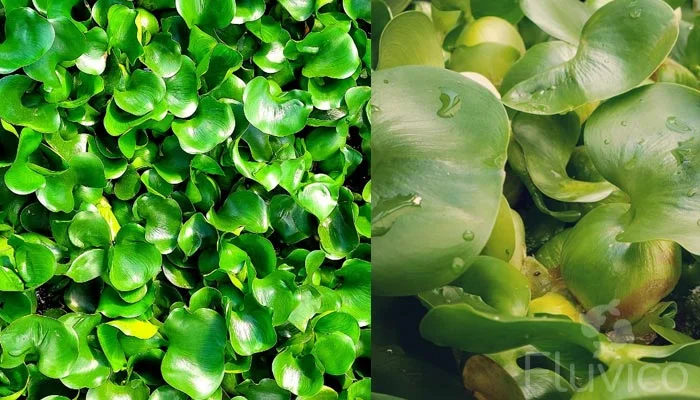
Origin and Habitat
The Water Hyacinth, known in scientific circles as Eichhornia crassipes, has its roots in the Amazon basin in South America. This unique aquatic plant found its niche in the tranquil waters of slow-moving rivers, ponds, and lakes, beautifully enhancing these habitats with its glossy green foliage and stunning lavender blossoms.
Over time, the plant’s allure and adaptability led to its global spread, and it’s now found in North America, Asia, and Africa. Despite its tropical origin, Water Hyacinth has shown a remarkable resilience in adapting to varying climates, thriving in both tropical and subtropical conditions.
However, its remarkable growth rate and tenacity often result in it being classified as an invasive species, posing significant ecological challenges in its adopted habitats.
Description of Water Hyacinth
The Water Hyacinth is a stunning aquatic plant, characterized by its buoyant rosette of glossy, rounded, green leaves and delicate lavender blossoms. Its unique structure enables it to float elegantly on water surfaces, adding a splash of colour and life to its environment.
- Vibrant lavender flowers: These blossoms are clustered in spikes and offer a delightful contrast to the green foliage.
- Glossy green leaves: The leaves are broad and rounded, growing in a rosette pattern that allows the plant to float.
- Dark fibrous roots: The plant features a network of dark, feathery roots submerged beneath the water surface.
- Rapid growth: One of the fastest-growing plants, it can double its population in just two weeks under ideal conditions.
- Size: Individual plants typically reach a height of 10-20 inches.
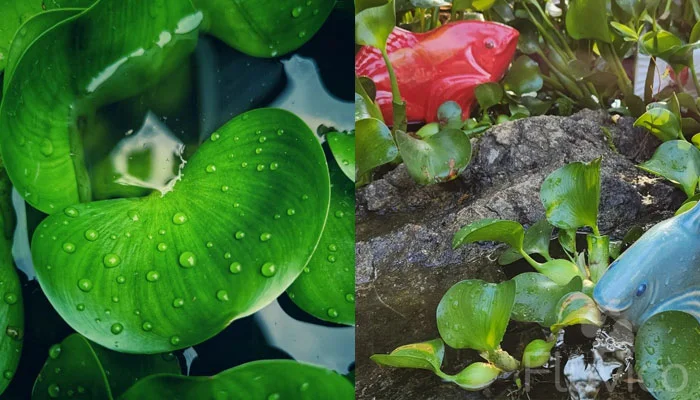
Water Hyacinth in Aquatic Environments
Tank Requirements and Water Parameters
If you’re planning to grow Water Hyacinths in an aquarium or pond, there are specific tank requirements and water parameters that you need to take into account to ensure their healthy growth.
- Tank Size: Can grow quite large, so a spacious tank is required. For a single plant, a 10-gallon tank is the minimum size recommended. However, for multiple plants, consider a larger tank or outdoor pond.
- Water Type: Freshwater is essential. They prefer slightly alkaline water, so maintaining a pH level between 7.0 and 7.5 is ideal.
- Temperature: Water Hyacinths are tropical plants and thrive in warm water. A temperature between 75-85°F (24-29°C) is best. In colder regions, they should be moved indoors during winter months.
- Hardness: The plant is adaptable and can handle a wide range of water hardness levels. However, a general hardness (GH) between 3-18 dGH is typically suitable for their growth.
- Lighting: These plants require plenty of light to grow well, so make sure your tank is located in a place where it can receive at least 6 hours of direct sunlight each day. If indoor lighting is your only option, use powerful full-spectrum aquarium lights.
- Substrate: As a floating plant, Water Hyacinths do not require substrate. They absorb nutrients directly from the water through their feathery, hanging roots.
- CO2 and Fertilization: While Water Hyacinths can grow without additional CO2, supplementing CO2 can promote healthier and faster growth. Regular fertilization with a comprehensive aquarium plant fertilizer can also be beneficial, especially in a tank setup where nutrient uptake from fish waste is minimal.
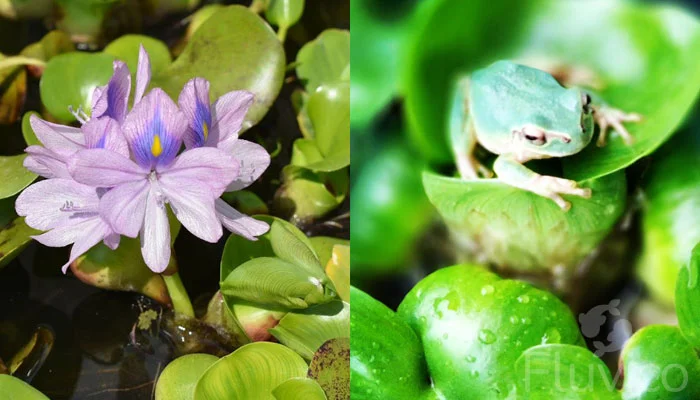
Growing Water Hyacinth
How to Grow
Growing Water Hyacinth can be a rewarding endeavor thanks to its rapid growth and beautiful appearance. Here are some steps to guide you through the process:
- Choose the Right Location: They prefer still or slow-moving water bodies such as ponds, lakes, or slow rivers. They need a location that gets plenty of sunlight as they require at least six hours of direct sunlight each day for optimal growth.
- Prepare the Water: While Water Hyacinths can tolerate a range of water conditions, they prefer slightly alkaline water. Check your water’s pH level to ensure it’s between 7.0 to 7.5.
- Planting: Simply place the plant on the water surface. The plant will float and spread across the water body. Ensure the water temperature is above 60°F (15.5°C) before you introduce them, as they thrive in warm conditions.
- Maintenance: Regularly monitor the growth of your plants. Due to their rapid growth, they may require thinning to prevent overcrowding. Remove excess or dying plants to ensure healthy growth.
- Nutrients: Water Hyacinths are heavy feeders, so if your water body lacks nutrients, you may need to add a water-soluble fertilizer to support their growth.
- Winter Care: If you live in a cooler climate, you’ll need to move your plant indoors during the winter, as they are not frost-tolerant.
Container Grown
Growing Water Hyacinth in a container is an effective way to control its rapid expansion. First, pick a spacious container that can hold water. Fill it with dechlorinated tap water or rainwater, and adjust the pH level to be slightly alkaline. Then, simply place the plant on the water’s surface.
Ensure it gets at least six hours of direct sunlight daily, and if necessary, supplement with a water-soluble fertilizer. Regularly check the plant for any signs of disease or decay, removing unhealthy parts as needed. In colder months, remember to move the container indoors, as the plant cannot withstand frost. 
Propagation
- Natural Propagation: Water Hyacinth propagates naturally by producing runners, or stolons, that grow out from the parent plant, forming new daughter plants.
- Separation: Once these daughter plants are well-formed, with their own root systems and leaves, they can be gently separated from the mother plant.
- Floating: Newly separated plants should be allowed to float freely on the water surface. They will continue to grow and produce their own runners, repeating the propagation process.
- Monitor Growth: Keep an eye on the growth of new plants. Due to their rapid growth rate, Water Hyacinths can quickly overcrowd a water body or tank.
- Controlled Propagation: If the plant growth becomes excessive, manually remove some plants to prevent overcrowding and to maintain a balanced ecosystem.
Remember, propagation of Water Hyacinth should be done responsibly due to its potential to become invasive in certain environments.
Temperature, Hardiness, and pH
- Temperature: As tropical plants, Water Hyacinths prefer warmer water temperatures. They thrive in conditions where the water temperature ranges between 75-85°F (24-29°C). In colder regions, they should be moved indoors during winter months to avoid frost.
- Hardiness: Water Hyacinths are quite hardy when it comes to water conditions. They can tolerate a variety of water hardness levels, though a general hardness (GH) between 3-18 dGH is typically suitable.
- pH: Water Hyacinths prefer slightly alkaline conditions. Therefore, maintaining a pH level between 7.0 and 7.5 is ideal for their growth and survival.
Lighting
Lighting is an essential factor in the growth and survival of Water Hyacinths. As a tropical plant native to the sunny Amazon basin, it thrives in plenty of light. Here are some key points regarding lighting for Water Hyacinths:
- Sunlight Requirement: Water Hyacinths require a lot of sunlight for optimal growth. Ideally, they should receive at least six hours of direct sunlight each day.
- Indoor Lighting: If you’re growing Water Hyacinths indoors or in an aquarium, ensure they are placed near a window that gets plenty of sunlight. If this is not possible, use full-spectrum aquarium lights or plant grow lights to provide the necessary light conditions.
- Effects of Insufficient Light: Without enough light, Water Hyacinths may not flower, and their growth could be stunted. The leaves might also start to yellow and lose their vibrant green color.
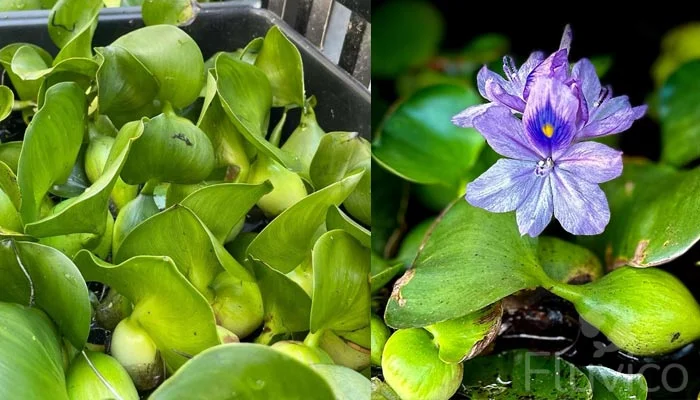
CO2 and Fertilization
- CO2: As a floating plant, Water Hyacinths obtain CO2 directly from the air rather than dissolved in water. Therefore, they generally don’t require additional CO2 supplementation like some other aquatic plants might.
- Fertilization: The plants are heavy feeders and can absorb a wide range of nutrients directly from the water through their root systems. If they’re kept in a nutrient-rich pond or aquarium where fish waste is available, additional fertilization might not be necessary.
- Nutrient Absorption and Water Quality: One of the benefits of these plants is their ability to absorb excess nutrients from the water, such as nitrogen and phosphorus. This can help to improve water quality and reduce the risk of issues like algal blooms.
Compatible Tankmates
Water Hyacinths can coexist well with various aquatic creatures in a pond or aquarium setting. However, the choice of tankmates largely depends on the size of the tank or pond, water conditions, and the needs of other inhabitants. Here are some compatible tankmates for Water Hyacinths:
- Fish: Most non-aggressive freshwater fish species can coexist peacefully. The plants can even provide shade and hiding spots for the fish. However, large herbivorous fish, like some Cichlids and Goldfish, may nibble on the roots and leaves of the plant, potentially damaging them.
- Invertebrates: Many invertebrates like snails and shrimps can live harmoniously with Water Hyacinths. They often feed on the microscopic algae and biofilm growing on the roots and leaves of the plants.
- Other Aquatic Plants: They can be combined with other aquatic plants, but their rapid growth and dense cover may block light for submerged plants. So, it’s essential to manage their growth to ensure other plants get enough light.
- Amphibians: Frogs and toads can also benefit from the presence of Water Hyacinths in a pond environment. The plants provide coverage and a potential breeding ground.
- Birds: In larger outdoor pond settings, They can provide a habitat for various bird species, especially water birds.
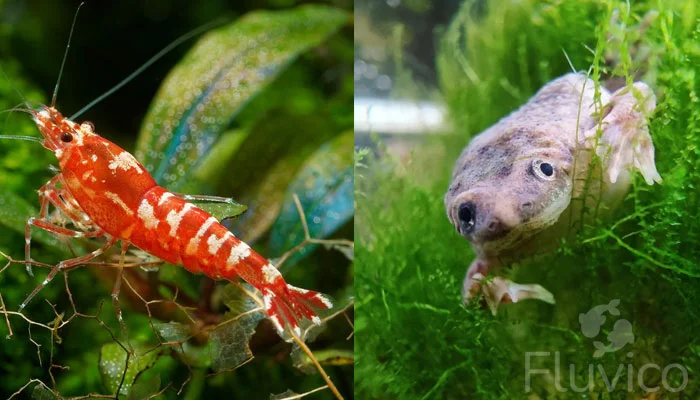
Plant Eater Fish
When it comes to fish that eat plants, you’ll need to carefully consider which species you introduce to your water hyacinth environment. Several herbivorous and omnivorous fish species are known to nibble on aquatic plants, including water hyacinths. These include:
- Goldfish: Both common goldfish and their larger koi cousins are notorious plant eaters and might damage your plants by nibbling on their roots and leaves.
- Cichlids: Some types of cichlids, especially larger South American and African species, are known to eat plants.
- Plecos: Certain species of plecos, like the common plecostomus, can also damage aquatic plants, though they are primarily algae eaters.
- Silver Dollars: These are herbivorous fish that will nibble on a variety of plants.
- Tinfoil Barbs: These are omnivorous fish that may eat plant material, though they primarily feed on small animals and detritus.
If you have water hyacinths in your pond or aquarium, it’s recommended to choose plant-friendly fish or monitor the plant-eating fish’s behavior to ensure they aren’t causing significant damage to the water hyacinths. If necessary, you can provide these fish with ample vegetable-based food to deter them from eating the plants.
The Benefits and Problems of Water Hyacinth
Despite their beauty and utility, this can be a mixed blessing. It has various benefits but can also cause significant problems if not adequately managed.
Benefits
- Water Purification: They can absorb toxins, pollutants, and excess nutrients from the water, improving water quality and helping to control algae blooms.
- Habitat Creation: The dense cover they form provides a habitat and food for various aquatic species, including fish, invertebrates, and birds.
- Aesthetics: With their attractive lavender flowers and glossy green leaves, Water Hyacinths can enhance the visual appeal of ponds and aquariums.
- Soil Enrichment: Decomposed plants can be used to enrich soil with nutrients.
Problems
- Invasiveness: One of the main issues with Water Hyacinths is their potential to become invasive due to their rapid growth rate. They can quickly overcrowd water bodies, blocking sunlight for other aquatic plants and animals.
- Impact on Biodiversity: When they plants dominate a water body, they can alter the ecosystem and negatively impact native species diversity.
- Blocking Waterways: In rivers and canals, large plant mats can obstruct boating, fishing, and other water activities.
- Disease and Pest Vector: Stagnant water under the dense mats can become a breeding ground for mosquitos and other pests.

Care and Maintenance of Water Hyacinth
Taking care of Water Hyacinths involves a few key steps. Despite being relatively easy to grow, these plants need some maintenance to keep them healthy and prevent overgrowth. Here are some tips for the care and maintenance.
- Light: Ensure your Water Hyacinths receive at least six hours of sunlight per day. If you’re growing them indoors, consider using a full-spectrum light to simulate sunlight.
- Temperature and Water Conditions: Water Hyacinths thrive in warm water between 75-85°F (24-29°C). They prefer slightly alkaline conditions with a pH between 7.0 and 7.5. They are hardy plants but the water should ideally have a general hardness between 3-18 dGH.
- Nutrients: Ensure the water is nutrient-rich, either from organic matter like fish waste or through adding a suitable water-soluble fertilizer.
- Overcrowding: Water Hyacinths grow rapidly and can crowd out other plants or block sunlight from penetrating the water. Regularly remove excess plants to maintain balance in your water body.
- Winter Care: In colder regions, Water Hyacinths need to be moved indoors or they could die off in the frost.
- Monitor Health: Keep an eye out for signs of poor health such as yellowing leaves, stunted growth, or lack of flowering. These could indicate problems with water quality, insufficient sunlight, or nutrient deficiency.
- Invasiveness: Due to their potential to become invasive, never dispose of Water Hyacinths in natural water bodies. Always dispose of unwanted plants responsibly, such as by compos
Purchasing and Quarantine Process
- Purchasing: Start by sourcing your plants from a reputable dealer. Look for plants that appear healthy – bright green leaves and robust roots are good indicators of a thriving water plant.
- Quarantine: Just like with new fish, it’s important to quarantine your new plants before introducing them into your main setup. This prevents any potential diseases or pests from spreading to your established aquatic environment.
- Set up a separate tank for your new plants and fill it with water. Place the tank where it will receive sunlight or provide artificial light to mimic their natural environment.
- Monitor the plants daily during the quarantine period. Look for any signs of disease or pests, such as yellowing leaves or a sudden loss of vigor. Any pests or diseases should be treated during this phase to prevent them from spreading.
- Observation: A quarantine period of about two weeks is generally enough. If no issues have emerged during this time, your plants are likely safe to introduce to your pond or aquarium.
- Acclimatization: When introducing the plants to their new home, be sure to acclimate them to the water conditions. This step is just as important as it is when introducing new fish to a tank.
B 
FAQ
Do Water Hyacinths require Substrate?
No, They do not require substrate. As free-floating plants, they extract all necessary nutrients directly from the water through their extensive root systems, and do not need soil or other substrate to thrive.
Are water hyacinth banned in UK?
Yes, Water Hyacinths are banned in the UK. Under the EU Invasive Alien Species Regulation, it is illegal to import, sell, grow, use, or release Water Hyacinths into the environment due to their invasive nature.
Are water hyacinth dangerous?
No, they are not directly dangerous to fish. In fact, they can provide shelter and food for fish. However, if allowed to overgrow, they can deplete oxygen levels and block sunlight in the water, which could harm fish.
Why is water hyacinth a threat?
Water Hyacinth poses a threat in open water due to its rapid growth and invasive nature. It can quickly form dense mats that block sunlight, reduce oxygen levels, disrupt water flow, impede water activities, and outcompete native aquatic species.
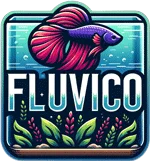
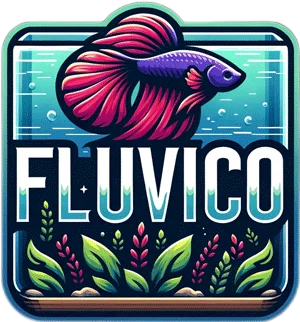
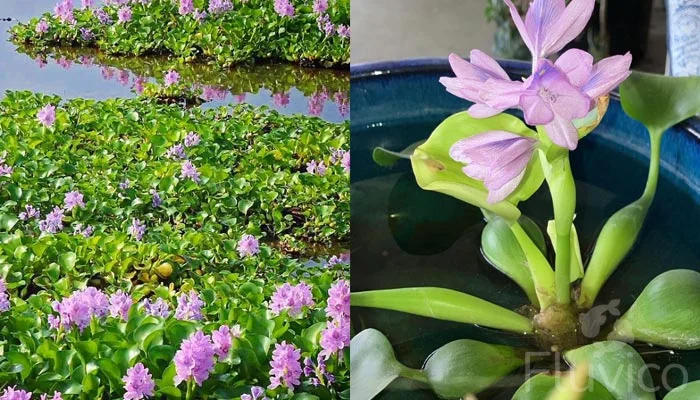
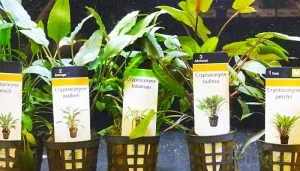
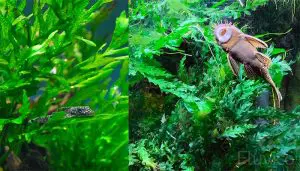
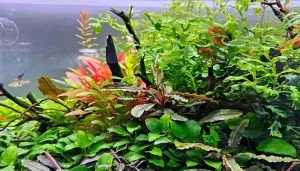
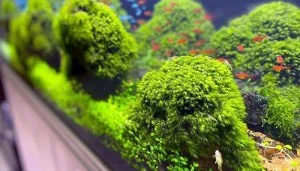
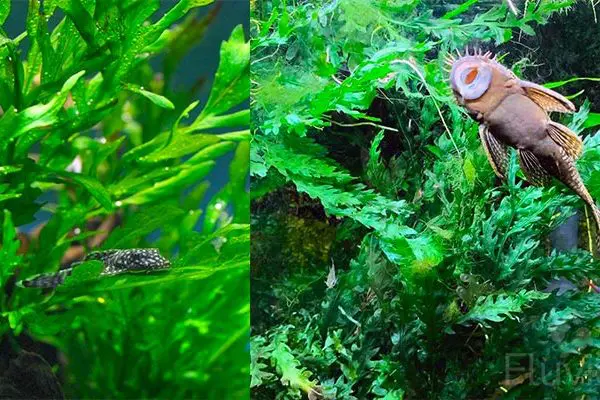


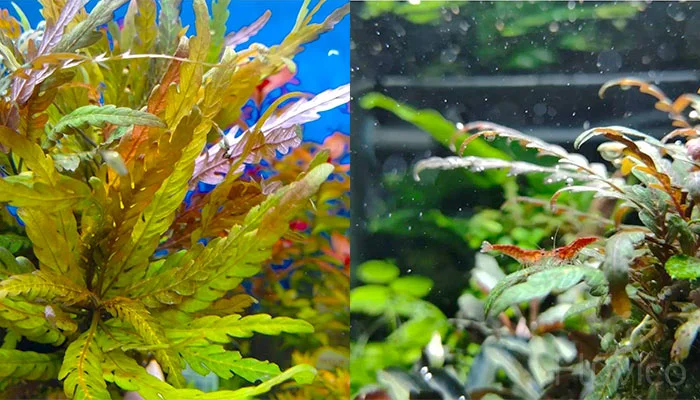

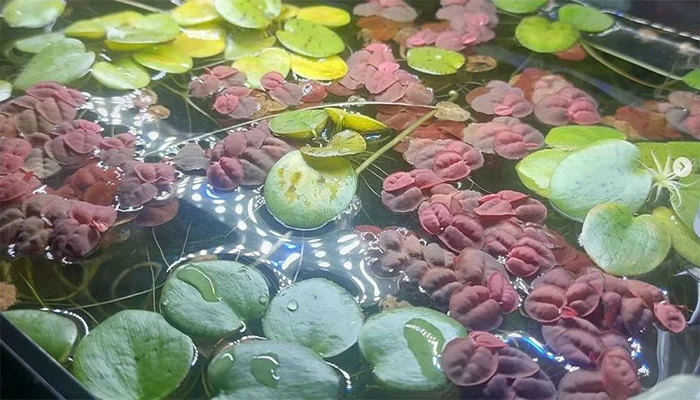
Hope you enjoyed our Water Hyacinth Care guide!
If you have any questions? Ask away, we’re here to help!
All the best,
Daniel